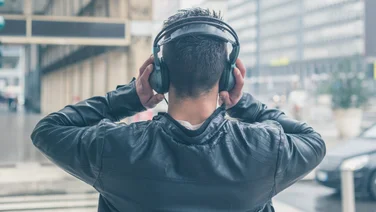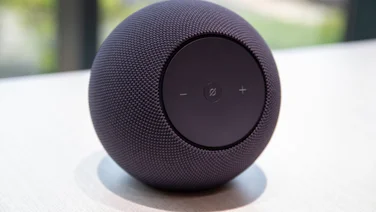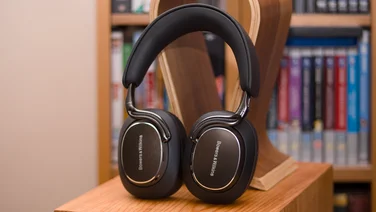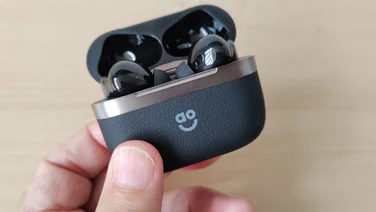To help us provide you with free impartial advice, we may earn a commission if you buy through links on our site. Learn more












- Pint-sized and durable
- Punchy output
- Handy built-in light
- Light on bass
- The Flip doesn’t cost much more
Consumer choice is a wonderful thing: it helps people find products that best meet their specific needs. But sometimes I think brands go too far, introducing relatively minor product differences to justify creating a new model, when they don’t necessarily need to. It’s something the JBL Grip has had me pondering.
This Bluetooth speaker is, essentially, a slightly smaller, less powerful and cheaper version of the JBL Flip 7, but with a built-in RGB LED light. Considering the praise I heaped on the Flip 7, that’s not inherently a bad thing. However, when you can buy the superior Flip for less money – as you could at the time of writing – its sibling is in danger of looking a little redundant.
JBL probably doesn’t care which you buy, as long as you purchase one of them, though. And given the brand’s market visibility and the quality of the speakers, there’s a good chance you will if you’re looking for a durable, portable Bluetooth speaker around £100.
What do you get for the money?
The JBL Grip costs £90, and sits between the JBL Clip 5 (RRP £60) and JBL Flip 7 (RRP £130) in JBL’s portable speaker range. At 64 x 65 x 153mm (WDH), it’s a similar shape to a slim fizzy drink can, and it weighs 385g, which even I can bicep curl without breaking a sweat. In comparison, the Flip 7 measures 183 x 72 x 70mm and weighs 580g.
The smaller housing necessitates a simpler driver setup and reduced output power. Inside the Grip is a single 43 x 80mm full-range driver with a stated frequency response of 70Hz to 20KHz and an output of 16W. The Flip 7, meanwhile, uses a 45 x 80mm woofer and 16mm tweeter to handle low- and high-frequency sounds separately, with the combination capable of outputting 35W.












The Grip also ditches the passive radiators found on the Flip and is designed to stand vertically, rather than horizontally. This results in a shift of the physical controls to the top of the speaker and just below its top front ridge. Power, Bluetooth pairing and Auracast are assigned to depressible buttons where a drink can’s ring pull would be, while volume and playback can be controlled via buttons embossed on the fabric speaker grille. The grille feels highly durable, and the Flip has an IP68 rating, which certifies it as dustproof and waterproof, matching the Flip in this department.
The Grip also matches the Flip’s Bluetooth functionality. It runs on version 5.4, supports multipoint pairing with two devices and is Auracast-compatible, meaning it can connect to any number of other Auracast devices to create a much louder audio experience.












Stereo pairing is supported, too, and you’ve got audio customisation options in the JBL Portable app. These include four EQ presets, a seven-band graphic equaliser and “Playtime Boost”, which limits low-end reproduction while increasing perceived overall volume and battery life. Said battery life is 12 hours as standard or 14 hours with that boost engaged.
One party trick the Grip possesses that sets it apart from the Flip is an LED light built into its rear. This can be used as a colourful torch in a pinch, but is primarily there for aesthetic appeal. You can choose between several “Light Show” patterns, adjust the brightness, and select from a handful of colours within the app.
What do we like about it?
JBL has the construction of compact, portable speakers down to a fine art, and the Grip is perhaps the best example of its mastery of the format to date. I found it incredibly satisfying to look at and hold, and a great size to carry around in a bag or even a pocket. It’s available in a pleasing array of colours in addition to the purple I tested, with Pink, Blue, Squad (camo), Black, Red and White completing the lineup.
Its slim design doesn’t compromise ruggedness either; you’re still getting a speaker that I was confident could survive just about any scenario. Its waterproofing made it the perfect shower companion.












Don’t let its diminutive stature fool you, however. For its size, it’s a potent performer. It didn’t blow my head off like the Flip did when positioned on my desk, but 50% volume was more than enough for personal listening sessions. And in situations when you want to go loud, it delivers with aplomb; it had the Old Hamptonians FC dressing room pumped with its broad and coherent soundstage when I placed it in the corner of the room.
The forward-facing driver means the soundstage is a little one-directional, but whack Playtime Boost on, and it’s impossible not to be impressed by the amount of sound this little thing creates. I would typically recommend leaving Playtime Boost off in most cases, though, and will explain why shortly.












The full-range driver does a particularly good job communicating mids and treble. The vocals on Sister Hazel’s Change Your Mind were crisp, and there was a decent level of separation between the acoustic, electric and bass guitars and the drums. It communicates tempo very effectively, too. The Marvo V & Benjamin Remix of Southside Spinners’ Luvstruck was articulated with an unhesitating forward impetus that would make Kevin and Perry Go Large and then some.
The Grip’s light is alluring without being too showy – it’s restricted to a strip about 2 x 6cm running along the back of the speaker – and adds a soothing, somewhat psychedelic vibe to proceedings. I’d have liked a few more colours to choose from in the app, but there’s a reasonable selection of static and fluid patterns available.
What could be improved?
The light isn’t the only bright thing about the Grip: its sound strongly favours high frequencies. I didn’t find this an issue at moderate volume levels, but got a little aurally fatigued when I pushed the volume up, a problem exacerbated by the Playtime Boost mode.
The solo piano rendition of Alexis Ffrench’s Reborn was too sharp for my tastes, and the balance felt a little off when listening to tracks that seek to integrate a sizeable bass component with vocals and trebles. For example, Calvin Harris and Florence Welch’s Sweet Nothing.












This is where the Flip 7, with its dedicated woofer, has a big advantage. It’s able to dig deeper into the lower frequencies and does so with greater muscle and authority. As someone who places a lot of value on bass reproduction and listens to a lot of music where it’s front and centre, this makes the Flip the better choice by a distance.
A minor grumble I have, but one I feel the need to raise, relates to the pathetic excuse for a strap that’s attached to the rear of the Grip. I get that the size of the speaker means it’s likely to be carried in a hand – it’s named the JBL Grip for a reason, after all – but I’d have liked the braided strap to be a little longer. This would have allowed it not only to be carried more easily, but allow it to be hung or attached to a wider variety of things. As it is, you can dangle the Grip on a coat peg, but that’s about it.












My other problem with the Grip is the one that I raised at the start of this review: as I’m writing this, you can actually buy the Flip for less than the Grip. In a straight shoot-out between the two speakers, the Flip is the clear winner, so it feels like JBL is eating its own lunch here. The money is all going to end up in the same pot – and the Grip will receive discounts of its own in due course – but I’m not convinced JBL needs the Grip in its lineup when all it really does is shave off a few centimetres and add a groovy LED light.
Should you buy the JBL Grip?
I don’t work in the product design or marketing team at JBL, though, and I know the brand holds a lot of stock in having a potent portable speaker with an RRP under the magic £100 mark.
And it’s produced one in the Grip that gets a whole lot right. I certainly won’t judge you if you’re captivated by its compact size and drawn to its alluring light; it’s a lovely little speaker and one that may well reach the 1 million units a year sales JBL is hoping for.
However, it’s hard to wholeheartedly recommend the Grip when it has the Flip 7’s shadow looming large over it. Even when both are going for their list prices, I’d still advise anyone who cares to ask to spend a bit extra for a louder, bassier and better-balanced experience.







